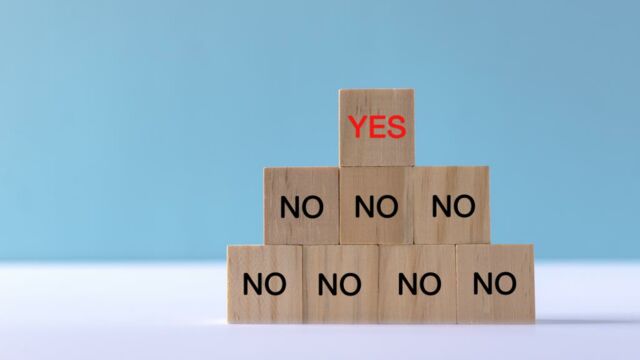In 2013, “consent” became a big topic of discussion when Robin Thicke and Pharrell released the song Blurred Lines. At first listen, it sounds like a harmless party song, until you listen to it a little closer. The song features one particularly damning lyric that repeats throughout — ”I know you want it.” In the context of the song, Thicke is singing about how he wants to domesticate a “good girl” and how he knows — without her saying anything — that his advances are welcome. While the men didn’t fully understand why these lyrics or the title Blurred Lines were concerning, it sparked a much larger conversation worldwide about what consent is and why “blurred lines” isn’t it.
Discover our latest podcast
So, what is consent?
Consent, often used to describe sexual consent, refers to actively agreeing to participate in sexual activity with another person or people. It should always be clear to the parties involved, and it relies heavily on constant communication throughout the activity. Something people have a hard time grasping about consent is that it can be withdrawn at any point, regardless of “how far” you’ve gone or not. People cannot consent if they are underage, intoxicated, incapacitated, asleep, or unconscious, and it can’t be coerced through intimidation, threat, or incessant pressuring. The absence of a “no” is not the same thing as an active “yes.” All of this applies to people in relationships, as well — consent doesn’t become “automatic” just because you have a bond with someone.
If consent is not given during sexual activity, then it is sexual assault or rape.
History of consent
While laws of consent have been around since 1880, they were nothing like the legislation today. Common ages of consent in the United States were between 10-12 years old, which slowly evolved to be 16-18 years old.
In the 1980s, academic Lois Pineau analyzed date rape from the feminist perspective, which led her to believe the current model of sexuality was far too unclear and outdated. She suggested that it be made more communicative in order for consent to become more explicit. Pineau argued that “no means no” and “yes means yes” needed to be the standard for everyone.
In response, many universities released campaigns about consent to their students with the intention of shedding light on the campus sexual assault epidemic.
Where are we now?
In the past few decades, consent has evolved in order to ensure the safety of the people involved. “Affirmative consent,” also known as “enthusiastic yes,” has become the standard form of consent for many because it includes clear verbal communication or nonverbal cues. Instead of waiting to say no, partners should actively seek out or give a clear “yes.” People find that this reframing helps them view sexual activity in a more positive light because it encourages both parties to mutually engage in the activity and discourages power dynamics.
Key figures
While Pineau definitely spearheaded the development of consent in the 1980s, a lot of organizations have continued the work. Groups like RAINN (Rape, Abuse, & Incest National Network) and Planned Parenthood have been leading the dialogue on consent for years, providing in-depth explanations of the concept and ensuring there’s no guessing work in people’s definition of it.
On top of that, they provide resources and support for any sexual abuse victims that may need them. Advocating for consent means much more than just spreading the word — it also means advocating for sexual abuse victims and recognizing the injustices they’ve faced when their lack of consent was ignored.
How can I help?
- Implement affirmative consent in your life (if you haven’t already). Even if you’re already in a relationship, work on creating an open and active dialogue with your partner. Be clear in what you want, set boundaries, and allow your partner to do the same.
- Don’t pressure people. Unfortunately, a lot of people still believe that the absence of a “no” is a “yes.” Before you move forward, ask yourself — have I asked them if they’re okay with this? Are they showing signs of discomfort? Am I ignoring signs for my own personal gain? When you can put yourself in another person’s shoes, you’re more likely to see the reality of the situation.
- See something? Stop it. If you ever see someone that you know cannot consent (maybe they’re intoxicated, asleep, or in distress) being taken advantage of, step in! Parties can be a breeding ground for this type of abuse, and being on high alert can save someone from a traumatic experience. Get the targeted person to safety as soon as you can. While you can confront the abuser if you feel safe enough, it can help to bring back up with you in case things turn sour.















